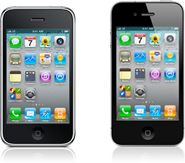 LNR publish LD-5 manual
LNR publish LD-5 manual
For now though you can download the manual at the link below:
http://www.lnrprecision.com/
Steve, G1KQH, is a regular contributor to AmateurRadio.com and writes from England. Contact him at [email protected].
 30m WSPR transceiver kit
30m WSPR transceiver kit
By now, you probably realise that I just love WSPR. With quite simple equipment it is possible to be decoded across the planet consistently with real QRP power levels. I am always on the look-out for new ideas, although until my health improves I am not in a position to build too much myself. See http://www.knology.net/~gmarcus/WSPR/wspr_v4.pdf for an example of a complete 30m WSPR transceiver.
This is NOT a new circuit – it has been around for some years – and it still needs a PC for the WSPR software. Some TX-only WSPR beacons use microprocessors to generate the WSPR TX messages, thereby freeing up the PC and consuming little power overall. Some sync to GPS to avoid timing issues too.
Roger Lapthorn, G3XBM, is a regular contributor to AmateurRadio.com and writes from Cambridge, England.
 AmateurLogic Live Stream Saturday Nov. 1
AmateurLogic Live Stream Saturday Nov. 1

We’ve got a bonus episode of AmateurLogic coming your way Saturday Nov. 1 at 1:00 PM CDT, 1700 UTC on www.live.amateurlogic.tv
We will talk with some of the interesting people George met at Pacificon this year.
George Thomas, W5JDX, is co-host of AmateurLogic.TV, an original amateur radio video program hosted by George Thomas (W5JDX), Tommy Martin (N5ZNO), Peter Berrett (VK3PB), and Emile Diodene (KE5QKR). Contact him at [email protected].
 AirSpy taking pre-orders for their $199 SDR receiver
AirSpy taking pre-orders for their $199 SDR receiver
From their website:
Airspy is an advanced software defined radio receiver capable of sampling 10MHz of spectrum anywhere between 24MHz and 1.7GHz – and even beyond with extensions. It all started when we needed a good performing receiver that’s still affordable but could not find a good solution in the market, so we designed ours. We believe that as of today, Airspy is the only serious wide band receiver solution that’s high performance and yet affordable.

Some specs:
- Continuous 24 – 1750 MHz RX range with no gaps
- 3.5 dB NF between 42 and 1002 MHz
- Tracking RF filters
- 35dBm IIP3 RF front end
- 12bit ADC @ 20 MSPS (80dB Dynamic Range, 64dB SNR, 10.4 ENOB) – Yeah, size does matter.
- Up to 80 MSPS for custom applications
- Cortex M4F @ up to 204MHz with Multi Core support (dual M0)
- 1.5 ppm high precision, low phase noise clock
- 1 RTC clock (for packet time-stamping)
- External clock input (10 MHz to 100 MHz via MCX connector) – Ideal for phase coherent radios
- 10 MHz panoramic spectrum view with 9MHz alias/image free
- IQ or Real, 16bit fixed or 32bit float output streams
- No IQ imbalance, DC offset or 1/F noise at the center of the spectrum that plagues all the other SDRs
- Extension ports: 16 x SGPIO
- 1 x RF Input (SMA)
- 1 x RF Output (Loopthrough, U-FL)
- 2 x High Speed ADC inputs (up to 80 MSPS, U-FL)
- 4.5v software switched Bias-Tee to power LNA’s and up/down-converters
Thoughts:
From what I’ve read, the big advantage of this over a standard RTL-SDR dongle is much less noise. I haven’t used one, but if it really lives up to their claims the $199 price point is actually pretty reasonable.
http://www.airspy.com / $199
Matt Thomas, W1MST, is the managing editor of AmateurRadio.com. Contact him at [email protected].
 Kaboom!
Kaboom!
Unfortunately, the rocket was carrying various OSCAR satellites, specifically the GOMX-2 and RACE CubeSats. Fortunately, it appears that no ground personnel were injured or killed by the mishap.
According to the ARRL:
"The 2U GMX-2 CubeSat was intended to test a de-orbit system designed by Aalborg University in Denmark. Karl Klaus Laursen, OZ2KK, is listed as the “responsible operator” on International Amateur Radio Union frequency coordination documents. The Amateur Radio payload proposed using a 9.6 k MSK data downlink on 437.250 MHz. Also on board was an optical communications experiment from the National University of Singapore. The mission also hoped to flight qualify a new high-speed UHF transceiver and SDR receiver built by an Aalborg University team.
The Radiometer Atmospheric Cubesat Experiment (RACE) CubeSat was a joint project between The Texas Spacecraft Laboratory (TSL) at the University of Texas-Austin and NASA’s Jet Propulsion Laboratory (JPL). It carried a 183 GHz radiometer, a new science instrument designed by JPL. The primary objective of the RACE mission was to collect atmospheric water vapor measurements. The spacecraft was equipped to transmit using GMSK at 38.4 k and CW telemetry on a downlink frequency of 437.525MHz, as coordinated with the IARU. TSL’s Edgar Glenn Lightsey, KE5DDG, was listed in the IARU coordination documents as the responsible operator."
The Antares rocket is a design of the Orbital Space Sciences group. It was on a re-supply mission to the International Space Station and had 5000 pounds of cargo as well as more than two dozen satellites on board. Mankind has been launching payloads into earth orbit for 57 years now. This just goes to show, that as much as this is "rocket science" - that stuff still happens.
On a related note, I was able to visually witness a very nice pass of the ISS this Monday evening. It was about a 60 or 70 degree pass just around local sunset. The ISS was very bright and showed up on the horizon right on cue. Wonderful how that works, isn't it? As I watched it fly overhead, just over the waxing crescent moon, I was reminded of the many passes of RS10/11 and RS12/13 in the 90s. I used to work those LEOs a lot, and had many pleasurable contacts over them.
72 de Larry W2LJ
QRP - When you care to send the very least!
Larry Makoski, W2LJ, is a regular contributor to AmateurRadio.com and writes from New Jersey, USA. Contact him at [email protected].
 The Completely Updated Incomplete List of Ham Radio iPhone Apps
The Completely Updated Incomplete List of Ham Radio iPhone Apps
 It is about time I updated one of my more popular posts about my favorite ham radio apps on the iPhone and IPad. As usual, I will focus on free or low cost (less than $5) apps that I am actively using. Some apps have just disappeared from iTunes and new ones have emerged. While this list is completely updated, it is still incomplete, because there are so many apps to choose from.
It is about time I updated one of my more popular posts about my favorite ham radio apps on the iPhone and IPad. As usual, I will focus on free or low cost (less than $5) apps that I am actively using. Some apps have just disappeared from iTunes and new ones have emerged. While this list is completely updated, it is still incomplete, because there are so many apps to choose from.
From the Simple Utility Category:
Ham I Am (Author: Storke Brothers, Cost: Free) A handy app that covers some basic amateur radio reference material (Phonetic alphabet, Q Signals, Ham Jargon, Morse Code, RST System, etc.) Although I find the name to be silly, I like the app!
Maidenhead Converter (Author: Donald Hays, Cost: Free) Handy app that displays your grid locator, uses maps and does lat/lon to grid locator conversions.
HamClock (Author: Ben Sinclair, Cost: $0.99) A simple app that displays UTC time and local time. This one reads out to the second.
There are quite a few good apps for looking up amateur radio callsigns:
CallBook (Author: Dog Park Software, Cost: $1.99) Simple ham radio callbook lookup with map display.
Call Sign Lookup (Author: Technivations, Cost: $0.99) Another simple ham radio callsign lookup with map display.
There are a few repeater directory apps out there and my favorite is:
RepeaterBook (Author: ZBM2 Software, Cost: Free) This app is tied to the RepeaterBook.com web site, works well and is usually up to date.
For a mobile logbook (and other tools):
HamLog (Author: Pignology, Cost: $0.99) This app is much more than a logbook because it has a bunch of handy tools including UTC Clock, Callsign Lookup, Prefix list, Band Plans, Grid Calculator, Solar Data, SOTA Watch, Q Signals and much more.
To track propagation reports, both HF and VHF:
WaveGuide (Author: Rockwell Schrock, Cost: $2.99) This is an excellent tool for determining HF and VHF propagation conditions at the touch of a finger.
If you are an EchoLink user, then you’ll want this app:
EchoLink (Author: Synergenics, Cost: Free) The EchoLink app for the iPhone.
There are quite a few APRS apps out there. I tend to use this one because my needs are pretty simple….just track me, baby!
Ham Tracker (Author: Kram, Cost: $2.99) APRS app, works well, uses external maps such as Google and aprs.fi. “Share” feature allows you to send an SMS or email with your location information.
Satellite tracking is another useful app for a smartphone:
Space Station Lite (Author: Craig Vosburgh, Cost: Free) A free satellite tracking app for just the International Space Station. It has annoying ads but its free.
ProSat Satellite Tracker (Author: Craig Vosburgh, Cost: $9.99) This app is by the same author as ISS Lite, but is the full-featured “pro” version. Although it is a pricey compared to other apps, I recommend it.
For Summits On The Air (SOTA) activity, there are a few apps:
Pocket SOTA (Author: Pignology, Cost: $0.99) A good app for finding SOTA summits, checking spots and accessing other information.
SOTA Goat (Author: Rockwell Schrock, Cost: $4.99) This is a great app for SOTA activity. It works better when offline than Pocket SOTA (which often happens when you are activating a summit).
For ham radio license training, I like the HamRadioSchool.com apps. (OK, I am biased here as I contribute to that web site.)
HamRadioSchool Technician (Author: Peak Programming, Cost: $2.99) There are a lot of Technician practice exams out there but this is the best one, especially if you use the HamRadioSchool.com license book.
HamRadioSchool General (Author: Peak Programming, Cost: $2.99) This is the General class practice exam, especially good for use with the HamRadioSchool.com book.
Morse Code is always a fun area for software apps:
Morse-It (Author: Francis Bonnin, Cost: $0.99) This app decodes and sends Morse audio. There are fancier apps out there but this one does a lot for $1.
Well, that’s my list. Any other suggestions?
– Bob K0NR
The post The Completely Updated Incomplete List of Ham Radio iPhone Apps appeared first on The KØNR Radio Site.
Bob Witte, KØNR, is a regular contributor to AmateurRadio.com and writes from Colorado, USA. Contact him at [email protected].
 Late October and DX with the DSW
Late October and DX with the DSW
It’s still beautiful even though most of the leaves are off the trees. I’ve gotten out the last two days. Yesterday a bike ride in East Andover… today I used the DSW in a field on Shute Hill to work Curacao, the Netherlands and a 2-way QRP QSO with Pennsylvania. I’ll start with today.
Judy and I hiked up the Rufus Colby Road and down the lane way into Will Ellis’s field. The beech trees are still glowing orange. I brought the beautiful DSW for 20 meters and a dipole. I decided to put the dipole up as a sloper… one end in a pine tree… the other end tied to a line and held down by a rock in the field. It didn’t go smoothly. I pulled off the PL259 connector from the RG-174 when it caught on some stubble in the field. Fortunately I had a knife and a little screw driver in the backpack, and I cobbled a connection together.
What a sweet rig. 2 watts… digital VFO with a built in keyer and nice filtering. As soon as I got set up, I worked Al WA3PTY in Pennsylvania! He was only running 1 watt. Wow… We’ve worked each other a dozen times before, but what a hoot to make this QSO from Shute Hill… 2-way QRP.
After that I went down the band and worked PA2EVR in the Netherlands. It was a quick 599/599 exchange. Then I worked PJ2/DL8OBQ in Curacao, an island just north of the Venezuelan coast. This was also a quick exchange. But what a lot of fun! A tiny rig, low power, simple antenna from the top of Shute Hill. It doesn’t get much better. Thanks Dave for designing the little DSW!
Bike Ride in East Andover
Yesterday, Judy and I rode our bikes about 5 miles on the old rail trail in East Andover. There were so many leaves on the trail, we couldn’t even see the ground.
I stopped at a little brook to operate and discovered that I’d left the backpack and the rig in the camper. This is not a good sign. Before heading home, we stopped at Highland Lake.
I tossed 33 feet of wire into a maple tree and sat down on the grass with the KX3. I started on 12 meters. W1AW/7 in Nevada was very strong and we made a quick exchange. Then I switched to 15 meters and called Oscar EA1DR. I’ve worked him in Spain at least a dozen times from the field. He’s always a welcomed QSO.
Things may look a lot different in a few days. There’s a forecast of snow for Sunday.
Jim Cluett, W1PID, is a regular contributor to AmateurRadio.com and writes from New Hampshire, USA. Contact him at [email protected].






















